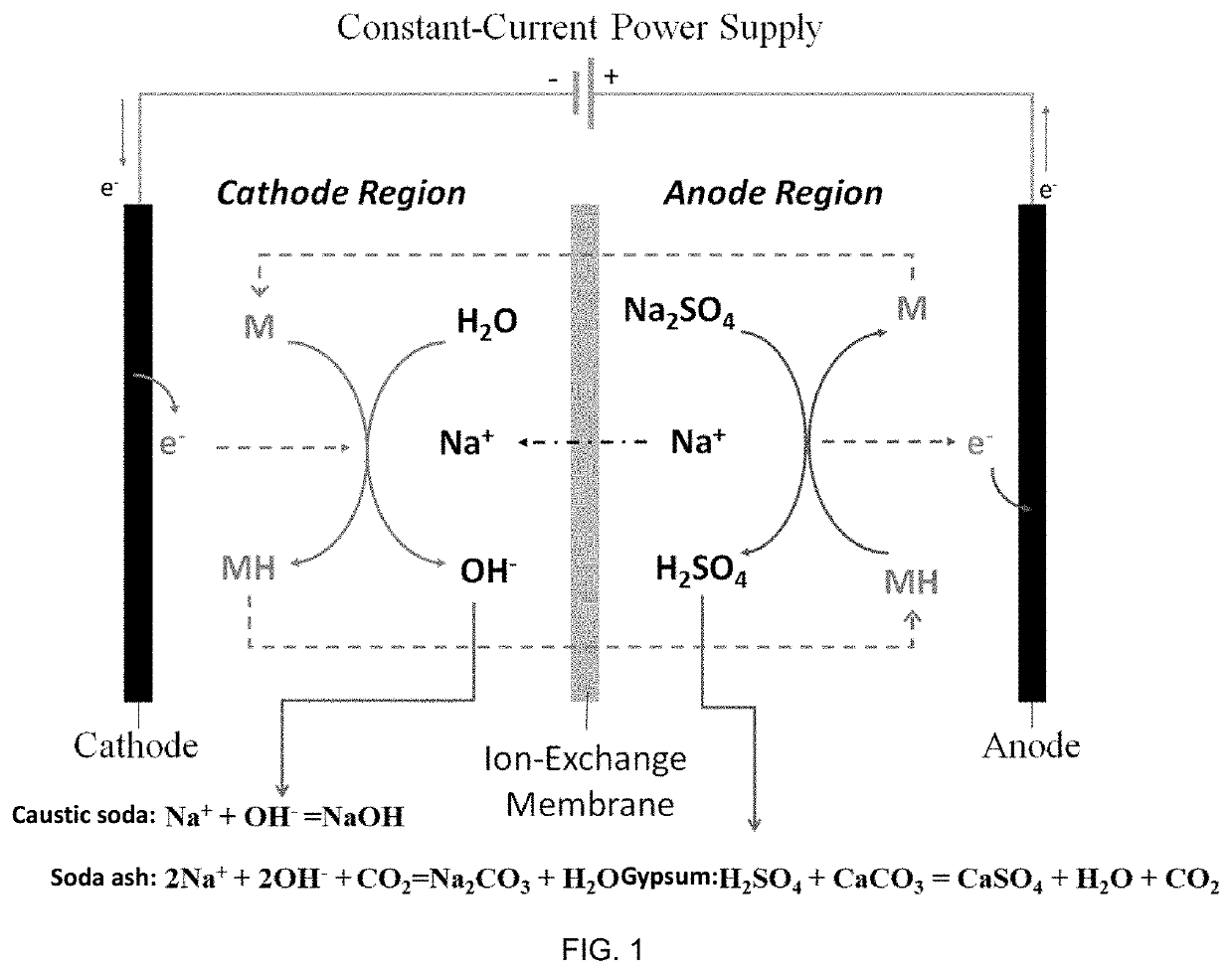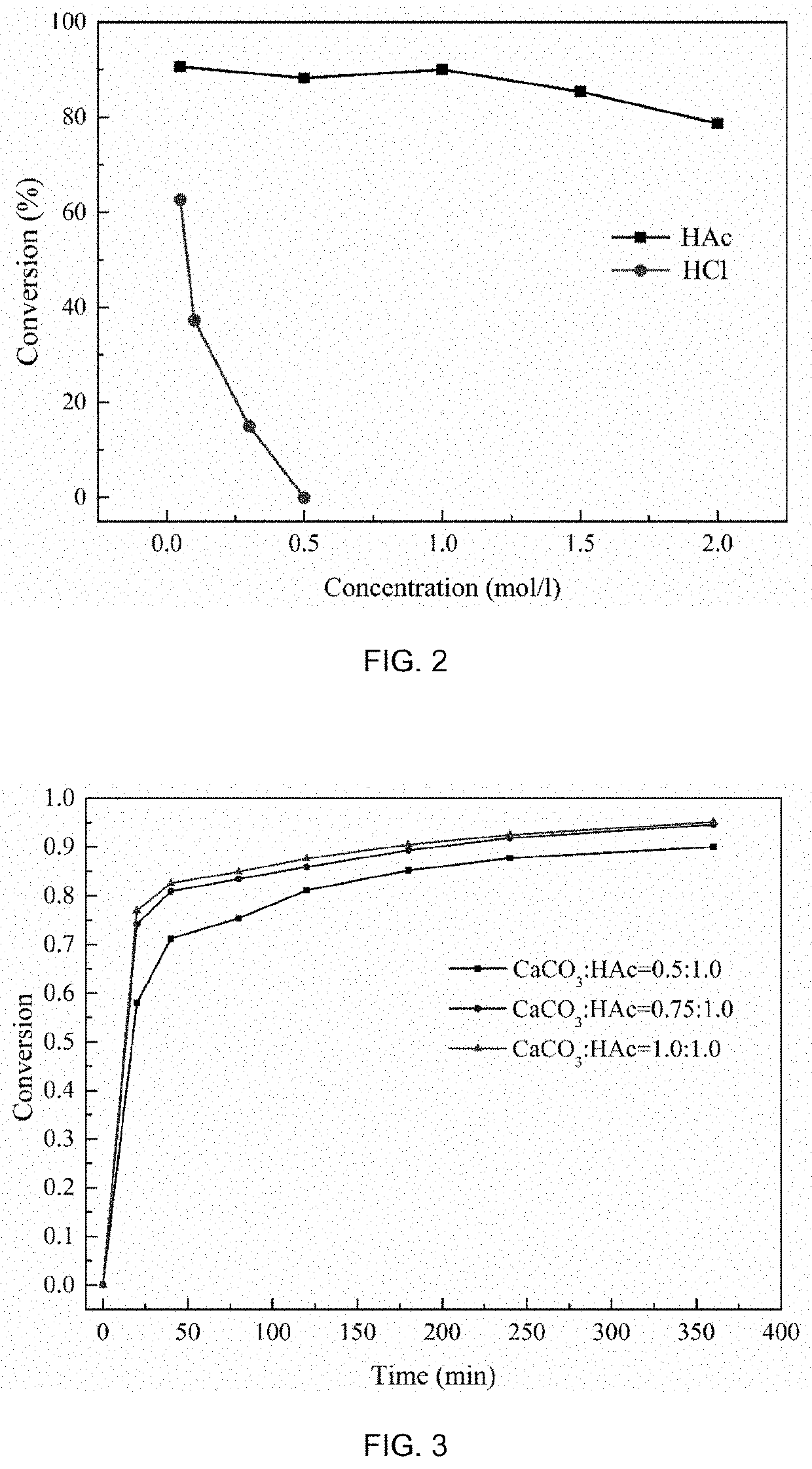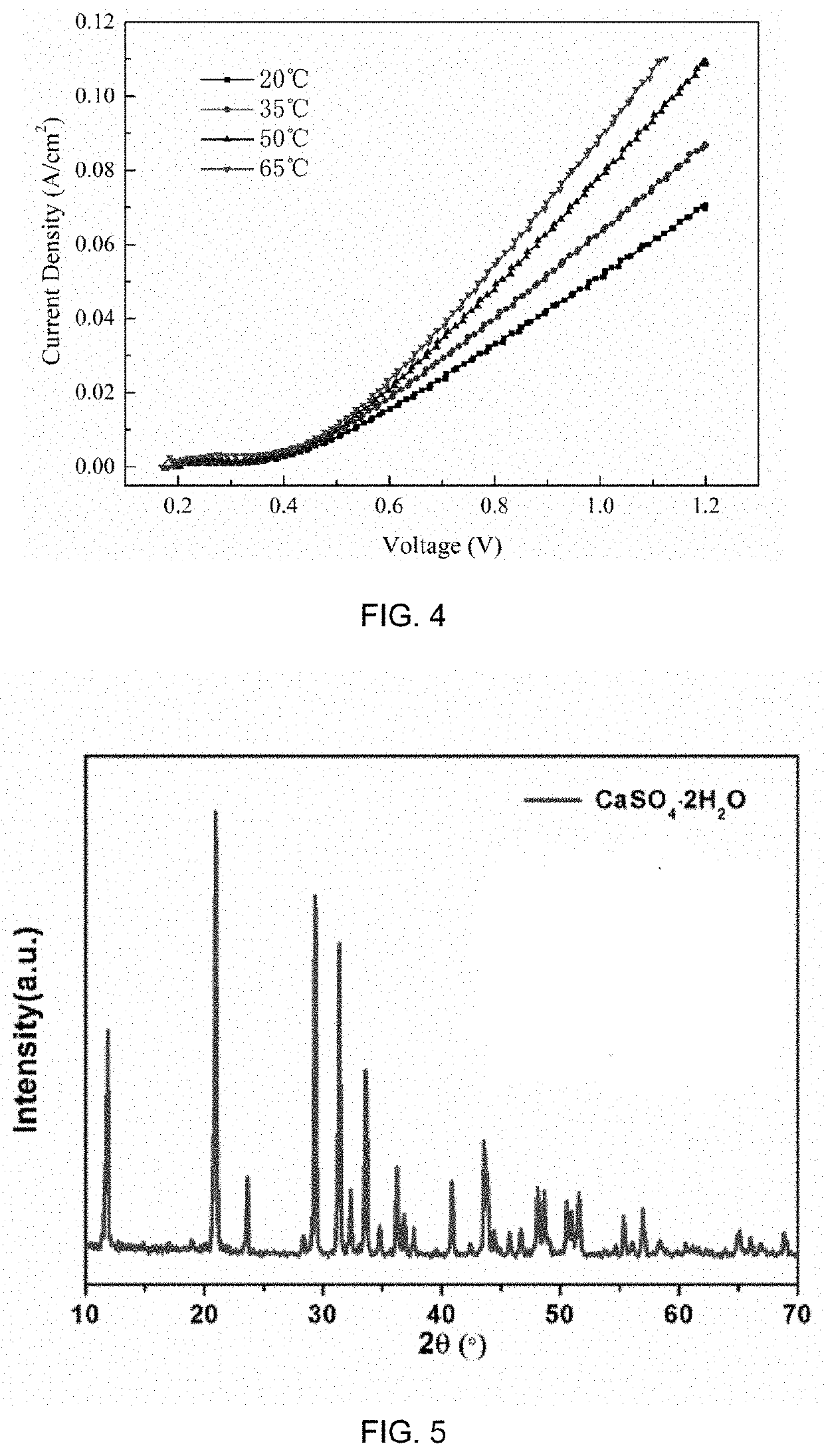Method of making alkali and gypsum by proton-coupled electron transfer reaction
a proton-coupled electron transfer and alkali technology, applied in the direction of electrolysis components, chemistry apparatus and processes, calcium/strontium/barium sulfates, etc., can solve the problems of large raw material loss, great hidden dangers, and people seem to lose confidence in the solvay process, so as to achieve less impurities in the alkali, reduce the content of other impurities, and improve the product quality.
- Summary
- Abstract
- Description
- Claims
- Application Information
AI Technical Summary
Benefits of technology
Problems solved by technology
Method used
Image
Examples
example 1
[0151]The process for preparing soda ash and co-producing high-purity gypsum from mirabilite and limestone by a PCET reaction in the example comprises the steps of:
[0152]placing the cation exchange membrane into an electrolytic cell to divide the electrolytic cell into an anode region and a cathode region, adding 50 mL of sodium acetate solution (with the concentration of 2 M) into the anode region as an anolyte, adding 50 mL of sodium carbonate (with the concentration of 3 M) into the cathode region, simultaneously bubbling CO2 gas at the rate of 10 mL / min in the cathode region for 5 minutes, and continuously circulating the electrolyte into an electrode compartment of the electrolytic cell by a peristaltic pump at the flow rate of 20 mL / min; adding 0.3 mol / L
into the cathode region as cathode electrocatalyst M, adding 0.3 mol / L reduction-state
into the anode region as the anode electrocatalyst MH, and applying a DC source (IT6932A, Itech) between the anode and cathode electrodes to ...
example 2
[0159]The process for preparing soda ash and co-producing high-purity gypsum from mirabilite and limestone by a PCET reaction in the example comprises the steps of:
[0160]placing a cation exchange membrane into an electrolytic cell to divide the electrolytic cell into an anode region and a cathode region, adding 50 mL of sodium formate solution (with the concentration of 3 M) into the anode region as an anolyte, adding 50 mL of sodium carbonate (with the concentration of 2 M) into the cathode region, simultaneously bubbling CO2 gas at the rate of 20 mL / min in the cathode region, and continuously circulating the electrolyte into an electrode compartment of the electrolytic cell by a peristaltic pump at the flow rate of 20 mL / min; meanwhile, adding 0.1 mol / L
into the cathode region as cathode electrocatalyst M, adding 0.1 mol / L
into the anode region as anode electrocatalyst MH, and applying a DC power supply (IT6932A, Itech) between the anode electrode and the cathode electrode to provid...
example 3
[0169]The process for preparing caustic soda and coproducing high-purity gypsum from mirabilite and limestone by a PCET reaction in the example comprises the steps of:
[0170]placing a cation exchange membrane into an electrolytic cell to divide the electrolytic cell into an anode region and a cathode region, adding 50 mL of sodium formate solution (with the concentration of 1.5 mol / L) to the anode region as an anolyte, adding 50 mL of sodium hydroxide (with the concentration of 1.5 mol / L) to the cathode region, and continuously circulating the electrolyte into an electrode compartment of the electrolytic cell by a peristaltic pump at the flow rate of 20 mL / min; meanwhile, adding 0.3 mol / L
into the cathode region as cathode electrocatalyst M, adding 0.3 mol / L
into the anode region as anode electrocatalyst MH, and applying a DC power supply (IT6932A, Itech) between the anode electrode and the cathode electrode to supply current;
[0171]where the anode electrode is carbon cloth, the cathode...
PUM
| Property | Measurement | Unit |
|---|---|---|
| energy consumption | aaaaa | aaaaa |
| energy consumption | aaaaa | aaaaa |
| electrolysis voltage | aaaaa | aaaaa |
Abstract
Description
Claims
Application Information
 Login to View More
Login to View More - R&D
- Intellectual Property
- Life Sciences
- Materials
- Tech Scout
- Unparalleled Data Quality
- Higher Quality Content
- 60% Fewer Hallucinations
Browse by: Latest US Patents, China's latest patents, Technical Efficacy Thesaurus, Application Domain, Technology Topic, Popular Technical Reports.
© 2025 PatSnap. All rights reserved.Legal|Privacy policy|Modern Slavery Act Transparency Statement|Sitemap|About US| Contact US: help@patsnap.com



